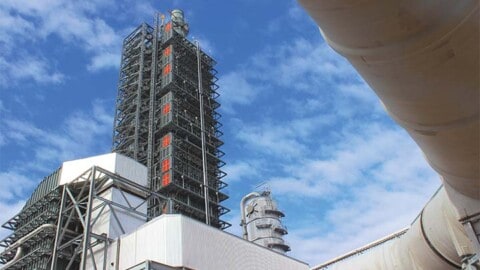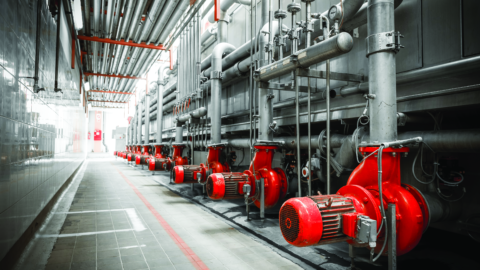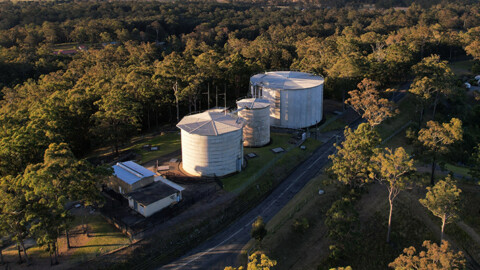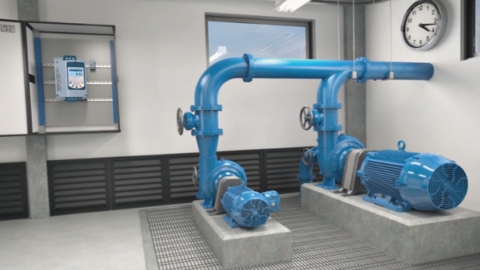Traditional reciprocating pump designs are not always optimal for every pumps application, this has resulted in the design and manufacture of a number of specialty pumps to fill these gaps.
Here are some of the most common specialty pumps.
Jet pumps
Jet pumps (also known as ejector pumps) are a type of centrifugal pump that have an ejector (venturi) attached at the discharge which has a converging area – a throat area and a diverging area. They use a high velocity jet of fluid to create a low pressure area in the mixing chamber, causing the suction fluid to flow into the chamber. At the throat of the converging section of the ejector, the pressurised fluid is ejected at high velocity. This creates a vacuum that draws in fluid into the pump. While they are most commonly inserted vertically into the fluid, they can be mounted horizontally as well.
They are typically less efficient than a standard centrifugal pump due to factors such as friction loss, but may be more efficient in applications where it is dealing with combined media including gases, and in variable well conditions where surface characteristics involve turbulence.
Generally these pumps have a flow rate between 1-70gpm, total head (pressure) range between 20-200ft, and horsepower ranges from 0.5-5hp.
They are commonly used in well applications with shallow well versions where the ejector is mounted on the pump used for wells to a depth of 25ft and deep well versions with the ejector located in the well where the depth is up to 120ft. Deeper well will generally require the use of a submersible pump. They are also often used in home applications for wastewater, and applications where the fluid being pumped helps to create the motive force needed to move through the pump such as marine applications to transfer seawater.
Gas lift pumps
Gas lift pumps use a gas pressure source (usually compressed air) to lift the fluid being handled by mixing it with gas under pressure. This process occurs downhole, with the compressed gas injected down a casing tubing annulus, entering the well at numerous entry points called gas lift valves. As the gas enters the tubing at these different stages, it forms bubbles, lightens the fluids and lowers the pressure.
These pumps tend to have lower maintenance and installation costs than other pumps in the same application, and are generally easier to service.
It’s also useful in contexts where sand might clog or damage other types of lifts. It’s particularly useful when a well is deviated, and the wear on rods may be a concern.
These pumps are typically used in the oil and gas industry to increase pressure within the reservoir and encourage the medium to the surface. They are also useful where sand might clog or damage other pumps, or where the well is deviated and rod wear is a concern.
Magnetic drive pumps
Magnetic drive pumps are a type of sealless centrifugal pump that uses a magnetic coupling device to transmit torque to an impeller. The magnetic coupling device is mounted on a carrier or drive assembly and typically driven by a standard electric motor. This drive assembly has two separate rings of permanent magnets, with the outer set moving the inner set via a rotating magnetic field which drives the pumping mechanism without direct connection to the motor. This is what makes them sealless, as a shaft mechanical seal is not required (unlike with traditional centrifugal pumps), and it is this part that requires a lot of maintenance. By removing the need for a seal, it also makes the pump leak-proof and eliminates the need for a costly barrier fluid system where double mechanical seals are required.
These pumps normally use magnetic coupling devices manufactured from samarium cobalt and neodymium iron boride. These are rare earth magnets that don’t allow slip between the inner and out magnet rings, which allow the pump to achieve high torques and for pumps as large as 200hp to be designed and manufactured in this type.
They are energy efficient, but like most other sealless pumps, have a higher capital cost than comparable centrifugal pumps. These capital costs are often offset though their lower operating costs due to lack of seal replacement, cleanup, waste and downtime.
Magnetic drive pumps are primarily designed for clear fluid applications such as in industrial, municipal or agricultural settings that require pumping of clear, low viscous fluids and where there are no solids present as solids will cause quick failure of the sleeve bearings and thrust surfaces inside the pump. Some are able to move heavier or more viscous fluids, but this is not common. They are also used in applications to transmit acids or other fluids that cannot leak into the environment or where mechanical seals would be too expensive to buy and maintain such as in chemical plants, and in chemical services in pulp mills, power plants, water and wastewater treatment plants, etc.
Electromagnetic pumps
Electromagnetic pumps are a glandless pump without any rotating parts where the medium (principally liquid metals) is moved by a magnetic field.
As there are no moving parts within the pumped liquid there is no need for seals and bearings which are found in conventional mechanical pumps, thus minimising leaks, maintenance and repairs, and improving reliability.
There are three types of electromagnetic pumps:
- Conduction – the current is directly conducted into the fluid through electrodes. Can be AC or DC variants
- Induction – the current in the conducting fluid in induced by a travelling magnetic field
- Thermoelectric – the current flowing through the liquid metal is derived directly from the thermal power in the hot liquid metal flow
They pumps are primarily designed for use with liquid metals, such as NaK, sodium and lithium, at temperatures up to around 1500℉ (approximately 800℃). They can also be used with other metallic and nonmetallic fluids that have a sufficient level of electrical conductivity such as mercury, lead and bismuth. There are two main applications for these pumps: in nuclear plants to cool the reactor, and in foundry for pouring and transporting high temperature metals.

















